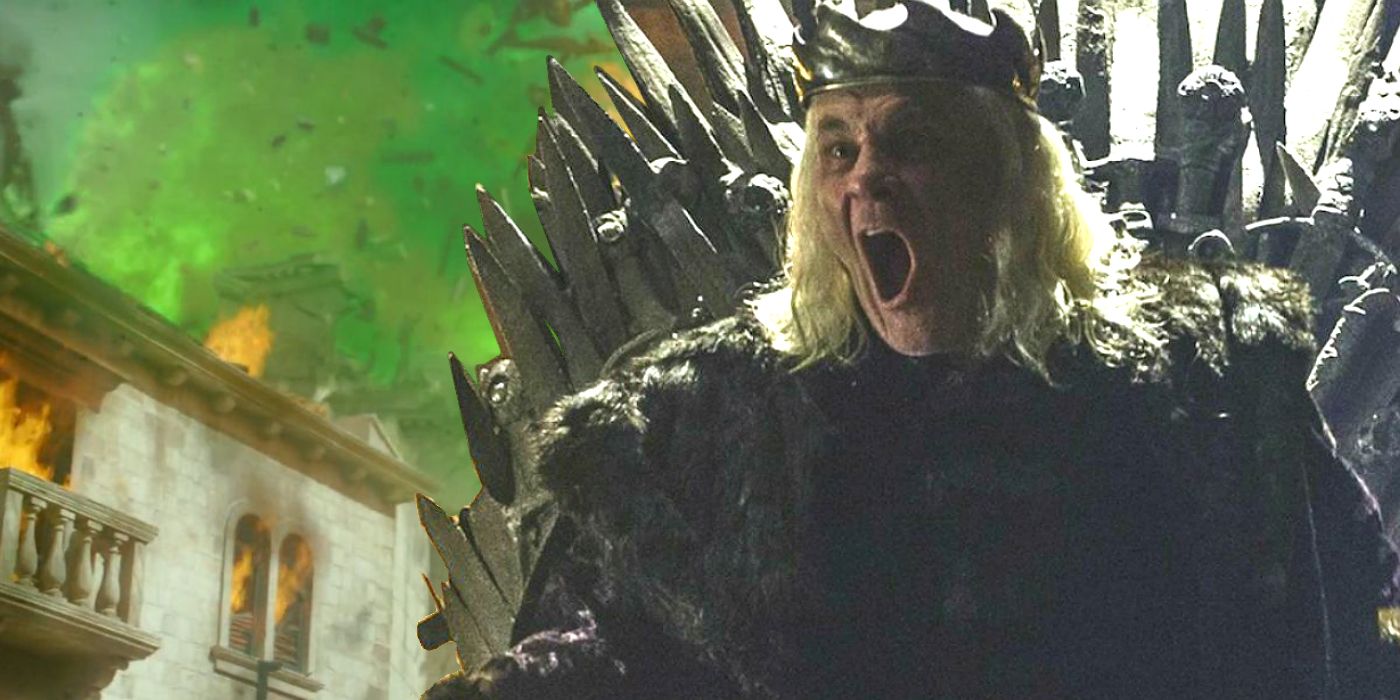Historical Context: The Mad King Got
The mad king got – The rise of the “mad king” is a phenomenon that has occurred throughout history, often during periods of great social and political upheaval. These rulers are typically characterized by their erratic behavior, paranoia, and delusions of grandeur. While the specific causes of their madness vary, there are often common factors that contribute to their downfall.
The Mad King’s reign was marked by madness and brutality. His reign ended when he was killed by Jaime Lannister. Rosabell Laurenti Sellers , who played Tyene Sand in Game of Thrones, has spoken about the challenges of playing a character who is both sympathetic and ruthless.
The Mad King’s madness is a cautionary tale about the dangers of power.
Societal Factors, The mad king got
- Political instability: Periods of political instability, such as civil wars or revolutions, can create a climate of fear and uncertainty that can lead to the rise of authoritarian rulers who promise to restore order.
- Economic hardship: Economic hardship can lead to widespread discontent and social unrest, which can be exploited by demagogues who promise to alleviate the suffering of the people.
- Cultural factors: Cultural factors, such as a belief in the divine right of kings or the importance of tradition, can make it difficult for people to challenge the authority of a ruler, even if they are clearly unfit to rule.
Personal Factors
- Genetic predisposition: Some people may be more susceptible to mental illness than others, and this can be exacerbated by stressful life events.
- Childhood trauma: Childhood trauma can have a lasting impact on a person’s mental health, and can make them more likely to develop mental disorders later in life.
- Drug use: Drug use can lead to a variety of mental health problems, including paranoia and delusions.
Literary and Cultural Depictions

The “mad king” archetype has been a staple of literature, theater, and film for centuries. From Shakespeare’s King Lear to Hamlet’s Claudius, these characters have captivated audiences with their erratic behavior, unpredictable actions, and tragic downfalls. These depictions have shaped public perception and understanding of the “mad king,” creating a complex and multifaceted archetype that has resonated across cultures and time periods.
Symbolic and Allegorical Meanings
The “mad king” archetype often carries symbolic and allegorical meanings, representing the fragility of power, the dangers of unchecked ambition, and the destructive nature of unchecked mental illness. These characters serve as cautionary tales, warning against the dangers of losing touch with reality and the consequences of unchecked authority.
Depictions in Literature
In literature, the “mad king” has been a popular character since the ancient Greeks. Sophocles’ Oedipus Rex features a king who unknowingly kills his father and marries his mother, driven mad by his tragic fate. Shakespeare’s King Lear is another classic example, a once-powerful king who descends into madness after dividing his kingdom among his daughters.
Depictions in Theater and Film
The “mad king” has also been a popular subject in theater and film. In the play Hamlet, Claudius is a usurping king who murders his brother to seize the throne. In the film One Flew Over the Cuckoo’s Nest, Jack Nicholson plays a rebellious patient in a mental institution who challenges the authority of the tyrannical head nurse. These depictions have brought the “mad king” archetype to life on stage and screen, further shaping public perception of the character.
Psychological and Medical Perspectives

The erratic and unpredictable behavior exhibited by the “mad king” has intrigued historians and scholars for centuries. While the exact cause of their madness remains a subject of debate, several potential psychological and medical conditions have been proposed as contributing factors.
Diagnosing mental illness in historical contexts presents significant challenges. The understanding of mental health and its treatment has evolved considerably over time, and the criteria used to diagnose disorders have varied widely. Additionally, historical records often lack detailed descriptions of the individual’s behavior, making it difficult to make accurate diagnoses.
Challenges of Diagnosis
- Lack of standardized diagnostic criteria in the past
- Incomplete or biased historical records
- Cultural and societal influences on perceptions of mental illness
Ethical Implications
Labeling a ruler as “mad” has profound ethical implications. It can be used to justify their removal from power, delegitimize their decisions, and undermine their authority. Moreover, it can perpetuate stigma and discrimination against individuals with mental illness.
It is essential to approach the diagnosis and labeling of mental illness in historical contexts with caution and sensitivity. Careful consideration should be given to the available evidence, the cultural and societal factors that may have influenced the individual’s behavior, and the potential consequences of labeling them as “mad.”
The Mad King got madder and madder, and his reign became more and more chaotic. He burned people alive, tortured them, and even killed his own children. But his madness was not just confined to Westeros. It spread to Essos as well, where it inspired the rise of the Jogos Nhai, a nomadic people who worshiped fire and death.
The Jogos Nhai were led by a charismatic warlord named Khal Drogo, who was said to be the reincarnation of the Mad King. Drogo’s horde swept across Essos, leaving a trail of destruction in its wake. He eventually invaded Westeros, but was defeated by the combined forces of the Seven Kingdoms.
The Mad King’s madness had finally been extinguished, but its legacy would live on for centuries to come. You can read more about the Mad King and his reign in game of thrones laurenti.
The Mad King’s reign was a time of great upheaval, a period when the realm was torn apart by war and madness. Yet, amidst the chaos, there were those who fought to restore order, knights who risked their lives to protect the innocent.
One such knight was Ser Arthur Dayne, the Sword of the Morning, whose exploits were immortalized in the popular A Knight of the Seven Kingdoms show. Ser Arthur’s bravery and unwavering loyalty served as a beacon of hope in a time of darkness, reminding the people of Westeros that even in the face of tyranny, there were still those who would fight for what was right.
The Mad King Got, a ruler known for his unpredictable nature and cruel punishments, once ordered the brutal murders of Prince Aegon and his sister Rhaena. This act, known as the “Blood and Cheese” incident (blood and cheese) , left a lasting scar on the realm.
The Mad King’s reign continued to be marked by violence and chaos until his eventual downfall.
The Mad King GOT was a ruthless and unpredictable ruler, whose reign was marked by violence and chaos. His madness led to the deaths of countless innocent people, and ultimately, to his own downfall. However, his legacy continues to haunt the realm, as his actions have had a profound impact on the events of game of thrones laurenti.
The Mad King’s madness is a cautionary tale about the dangers of unchecked power, and a reminder that even the most powerful of rulers can be brought down by their own hubris.